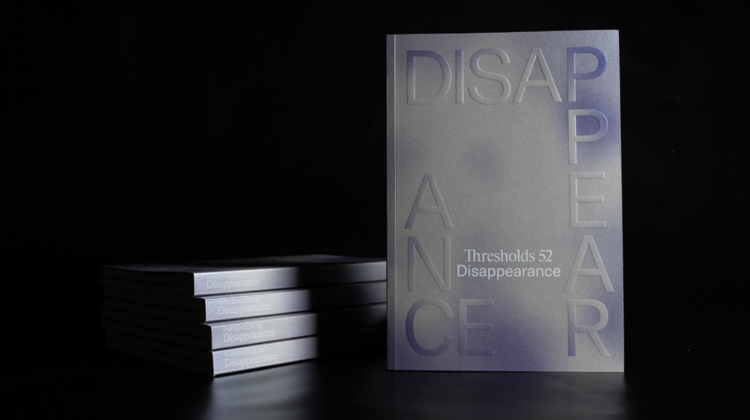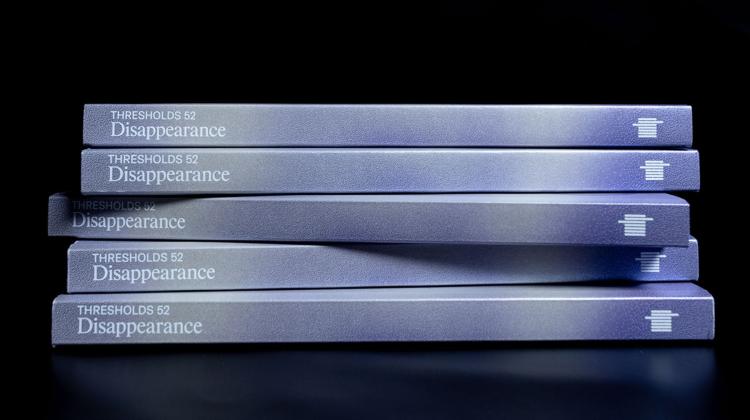Book launch: "Thresholds 52: DISAPPEARANCE"


We are pleased to announce the launch of THRESHOLDS 52: DISAPPEARANCE
Please join editors Editors: Samuel Dubois (PhD HTC) and Susan Williams MArch '24 in celebrating the journal's release on Friday April 12th 6-8pm in Long Lounge. The opening reception will have a limited number of complimentary copies of Thresholds 52. Food and drinks will be provided courtesy of ASC and the Department of Architecture. Along with a little magical treat!
Friday, April 12th 6-8pm
MIT, 77 Massachusetts Avenue, Cambridge MA
Architecture Department
Long Lounge, 7-429
_______________________
Please join us in thanking the contributors to the issue: Hajar Alrifai, Jocelyn Beausire, Elizabeth Saari Browne, Kira Clingen, James Craig, Esin Komez Daglioglu, Isabelle Doucet, Nida Ekenel, Ertug Erpek, Hélène Frichot, Janina Gosseye, Chong Gu, Lisa Haber-Thomson, Timothy Hyde, Celeste Martore, Sam May, Paul Mosely, Stephen Proski, Maria Rius Ruiz, T. Craig Sinclair, Naomi Stead, Benita VanWinkle, and Lydia Xynogala.
Some disappearances are pointedly more conspicuous than others. In 1983, magician David Copperfield ominously dropped a curtain revealing an empty black sky, having just made the Statue of Liberty vanish from sight. As Lady Liberty’s disappearance was watched with amazement by television viewers, Copperfield cautioned his audience: “Sometimes we don’t realize how important something is until it is gone.” Constructing illusions, playing tricks and deceiving audiences, magicians challenge what is real, imagined or just an illusion of the eye. But even a playful disappearance in a magic trick can reveal deeper implications.
Thresholds 52: DISAPPEARANCE explores the way art and architecture negotiate the elusive topic of disappearance. It seeks to discover how disappearances are spatially manifested (human/non-human, living/non-living, material/symbolic) and how the appearances of certain things have led to the disappearances of others. The journal includes scholarly articles and other artistic and intellectual contributions that engage the notion of disappearance by clarifying, complicating and challenging our collective understandings of architecture, art history, and other related disciplines and practices.
Disappearance is an ambiguous term—an occurrence, a process or an outcome. While a disappearance can stay within the binary state of visibility to invisibility, it can also make something become less common through a slow process towards non-existence. If disappearance itself is a fascinating subject, what enables something to survive after its raison d’être disappears may be just as intriguing. Scientific determinism tells us that, materially speaking, nothing actually disappears. The law of mass conservation establishes that while matter can neither be created nor destroyed, it can be rearranged in space. But this scientific truth becomes convoluted when the lived spatial and visual experiences of humans are accounted for. How can these two opposing views exist—or not exist—within the same world?
Graphic Design: Ella Gold
Manuscript Editor: Patricia Baudoin
Proofreader: Carly Schnitzler
Special Thanks: Hampton Smith, Zach DeGiulio, Joel Carela, Amanda Moore, Douglas LaVie, Melissa Vaughn, Timothy Hyde, and the anonymous peer reviewers who reviewed the contributions to this edition.


